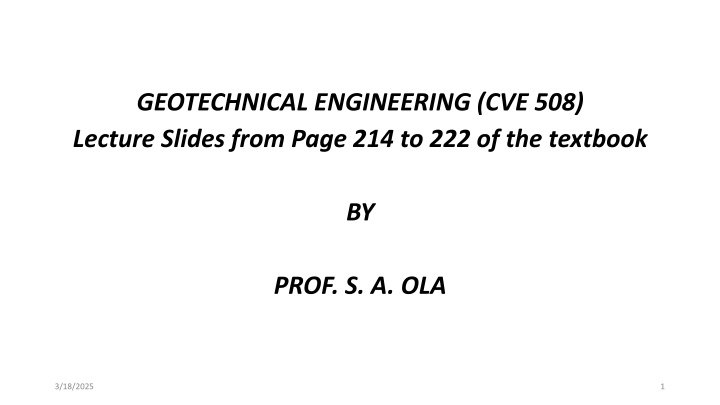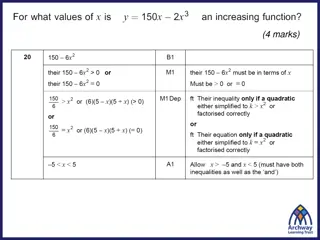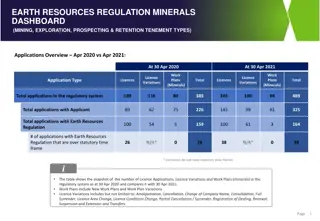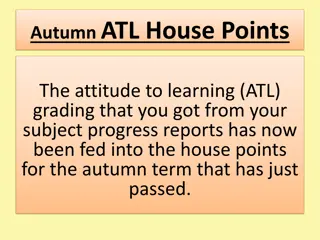
Geotechnical Engineering: Shear Strength and Soil Characteristics
Explore the complexities of shear strength in unsaturated clays, sensitivity classifications, thixotropy effects, and activity classification in geotechnical engineering. Learn about pore fluid pressure coefficients, Mohr-Coulomb equations, and the impact of water content on soil strength.
Download Presentation

Please find below an Image/Link to download the presentation.
The content on the website is provided AS IS for your information and personal use only. It may not be sold, licensed, or shared on other websites without obtaining consent from the author. If you encounter any issues during the download, it is possible that the publisher has removed the file from their server.
You are allowed to download the files provided on this website for personal or commercial use, subject to the condition that they are used lawfully. All files are the property of their respective owners.
The content on the website is provided AS IS for your information and personal use only. It may not be sold, licensed, or shared on other websites without obtaining consent from the author.
E N D
Presentation Transcript
GEOTECHNICAL ENGINEERING (CVE 508) Lecture Slides from Page 214 to 222 of the textbook BY PROF. S. A. OLA 3/18/2025 1
7.10 Shear Strength of Compacted Unsaturated Clays In a system in which both air and water are under pressure, the pore pressure is given by: ? = ?? ? ?? ?? (?.??) where: ua= pressure of air, uw= pressure in the water; = pore fluid pressure coefficient for unsaturated soils. = depends on the degree of saturation. 3/18/2025 2
Fig. 7.13: Pore fluid Pressure Coefficient for Unsaturated Soils. 3/18/2025 3
This relationship is evaluated experimentally and is shown in Fig.7.13 above. The effective stress may be written as: ? = ? ??+ ? ?? ?? ?.?? 7.11 Shear Strength of Cohesionless Soils The Mohr-Coulomb equation is modified by putting c = 0 and we obtain: s = tan 3/18/2025 4
7.12 Sensitivity undisturbed undrained strength remoulded undrained strength Sensitivity St= Sensitivity Classification < 2 Insensitive 2-4 4-8 8 - 16 Very sensitive 16 - 32 Slightly quick 32 - 64 Medium quick > 64 Quick Moderately sensitive Sensitive 3/18/2025 5
7.13 Thixotropy Remoulding a soil at constant water content changes the shear strength of the soil because of the destruction of the structure of the soil. If the soil is kept at constant water content strength increases with time. This is called Thixotrophy. 7.14 Consistency Table 7.2 describes the consistency of clays and gives detailed identification characteristics as well as the standard penetration resistance. 3/18/2025 6
7.15 Activity If a number of samples is taken from a particular clay stratum and their plasticity index is plotted against clay fraction (i.e. percentage by weight of particles finer than 2 microns), it is generally found that the points lie close to a straight line, which passes through the origin. The slope of this line was defined by Skempton (1953) as the activity of the clay. plasticity index clay fraction Activity = It is convenient to classify the activity of clays as shown below. Activity Classification 0.75 Inactive 0.75 1.25 Normal 1.25 Active 3/18/2025 8
7.16 Relative Density The shear strength and compressibility of granular soils are most ultimately related to the compactness of the grains expressed in terms of relative density For the purposes of foundation design, the relationship shown in Table 7.3 between the relative density, standard penetration resistance and the angle of internal friction may be used. 3/18/2025 9
3/18/2025 10
7.17 Tensile Strength The tensile strength is computed by the following formula: ? ??= where: t = tensile strength P = load b = radius of the specimen a = radius of disc H = height of specimen K = constant = 1.0 ?(??? ??) . (?.??) 3/18/2025 11
7.18 Residual Strength Parameters Fig.7.14 shows the residual strength for a drained direct shear run on clay. In some of the highly swelling clays, the residual strengths are less than half the peak strengths (Fig.7.15). 3/18/2025 12
7.18 Residual Strength Parameters 3/18/2025 13
7.18 Residual Strength Parameters 3/18/2025 14
7.19 Field (In Situ) Shear Tests: Undrained Vane Shear Test Typical undrained shear strength profiles with depth and plasticity index for natural soils are shown in Fig.7.16. 3/18/2025 15
Shear Vane Test The shear vane usually consists of four steel plates welded orthogonally to a steel torque rod as shown in the sketch in Fig.7.17. 3/18/2025 16
3/18/2025 17
7.19.1 Principle of Torque: A torque T is applied at the torque head to rotate the vane at uniform speed (about l /min in lab, and 0.l /sec in the field). The edges of the shear vane will cut a cylindrical surface in the soil and the applied torque is an approximate measure of the shear strength of the soil, (ASTM 1956). 3/18/2025 18
3/18/2025 19
7.19.2 Derivation of Equation 1. If the two ends and the length of the vane partake in shearing of the clay, then the maximum torsional shearing resistance, Mmaxof the clay is calculated as: Mmax= DHD 3 2 where: Mmax= T = net applied torque ? = c = qu/2 =su = shear strength of clay D = diameter of vane H = vertical height of vane 2 + 2. D2 D2H 2 +D3 4.2 D = ..(7.24) 6 3/18/2025 20
2. If only one end of the vane partakes in shearing the clay, then: ??? ?+?? M???= ?? ?? .. ..(?.??) Thus, for both ends from equation 7.24 ???? ? = ? = ??= ??]= ?? .???? . (?.??) [???? ? ?+ ? where k1 = constant 3/18/2025 21
For only one end from equation (7.25) ???? ? = ? = ??= ??]= ??.???? (?.??) [???? ? ?+ ? where k2 = constant 3/18/2025 22
Reference Ola, S. A. (2013): Essentials of Geotechnical Engineering, University Press PLC, Ibadan. 471 p. 3/18/2025 23
Thank you for your attention The video clip on this will be available as soon as the lockdown is lifted. 3/18/2025 24
3/18/2025 25
3/18/2025 26
3/18/2025 27






















